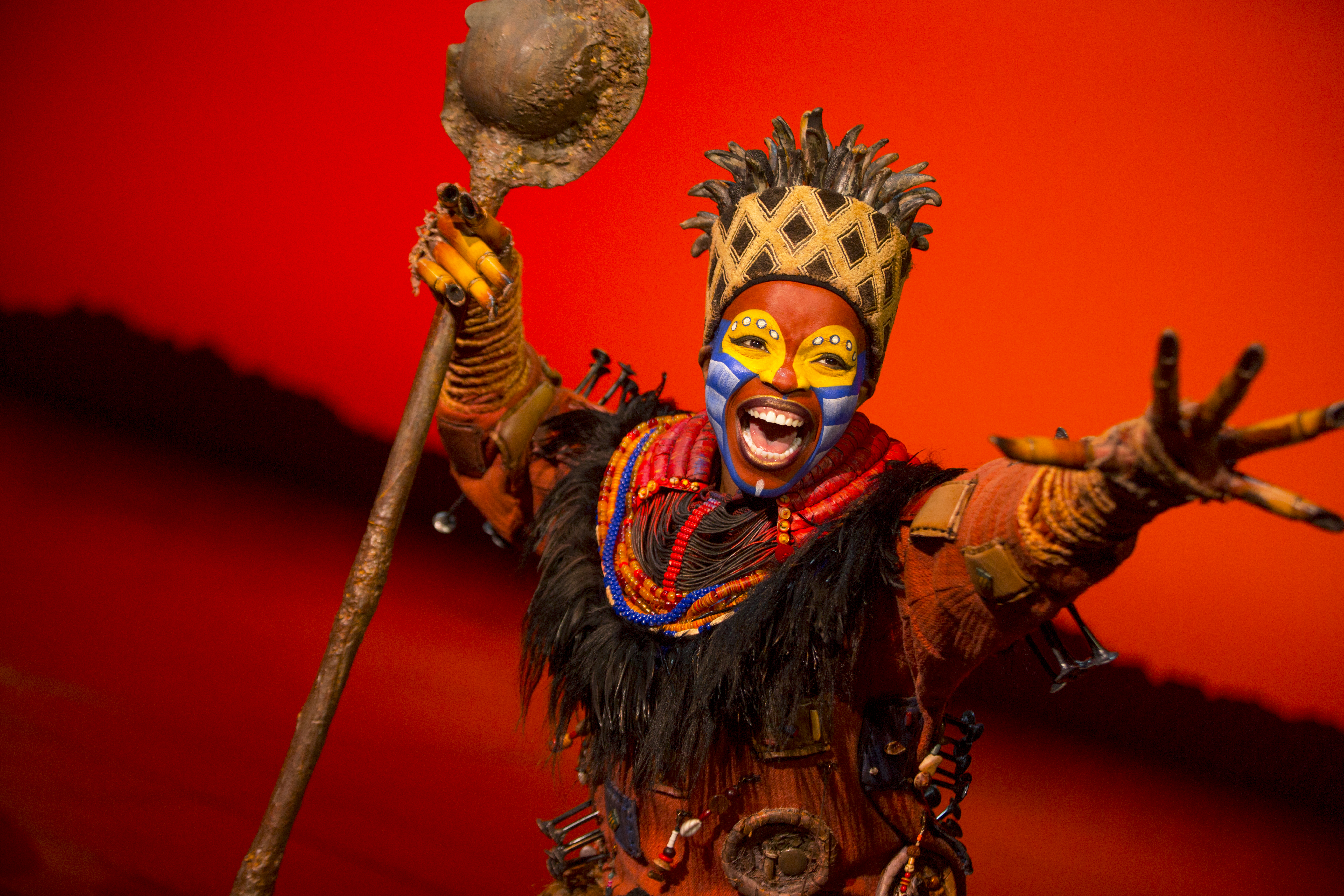DCPA NEWS CENTER
Enjoy the best stories and perspectives from the theatre world today.
Enjoy the best stories and perspectives from the theatre world today.

Mukelisiwe Goba as Rafiki. The Lion King. Disney. Photo by Matthew Murphy
Excerpted from The Lion King: Pride Rock on Broadway by Julie Taymor

Julie Taymor. Photo by Marco Grob, courtesy of New York Magazine
Julie Taymor on the Challenges of Translating the Film Version to the Stage
“To maintain the integrity of my own style, while incorporating it into one of the most beloved stories in recent history, was the first challenge to contemplate. With preconceptions about what the characters should look and sound like would the audience accept variations on a theme? Additionally, many of The Lion King’s scenes are seemingly impossible to transfer to the stage. The wildebeest stampede, the elephant graveyard, and its hundred hyenas. They are all inherently cinematic scenes. I relished the chance to stage them theatrically.”
On How the Stage Version of The Lion King Differs from the Film Version
“The limited 75 minute running time of the film just didn’t allow time for Simba to truly take the journey, both inner and outer, that would lead him full circle to his place as king. The two act stage format provided ample time to deepen and strengthen Simba and show the arduous path that leads to his self-discovery. His story needed more detail, depth and conflict.”
On Theatre’s Unique Advantage to Other Mediums
“I had decided early on that I would not do a realistic rendition of the Pridelands. I wanted audiences to be released from their memories of the film right from the start. I wanted them to take a leap of faith and imagination. Stage mechanics would be visible. Showing the mechanics, revealing the rods, ropes and wires that make it all happen, is something that the theatre can do that the film and television cannot. They are literal mediums where the spectator is asked to believe in the reality of the image while the theatre functions best as a poetic medium. The audience, given a hint or suggestion of an idea, is ready to fill in the lines, to take it the rest of the way. Magic can exist in blatantly showing how theatre is created rather than hiding the ‘how.’”
On the Marriage of the Human Actors with their Animal Counterparts
“One of the most powerful elements of the film is the rich humanity of the animal characters. In considering this ironic duality of the human and the animal it became critical in the design concept not to hide the actor behind a whole mask or inside an animal body suit. I wanted the human being to be an essential part of stylization. I wanted the audience to marvel at what a human being can do through true technical prowess.”
On How Actors are Selected for the Roles in The Lion King
“I brought puppets to auditions to see how performers would look in relation to specific puppets and how they would respond when asked to animate an inanimate object. Attitude is a very important part of my casting decision. I want an actor who is going to enjoy the challenge and not view it as a burden. Rather than expressly hiring puppeteers, I look for inventive actors who move well. A strong actor gives an idiosyncratic performance, because he infuses the puppet character with his own personality instead of relying on generic puppetry technique. The thrill of working with a good actor who is new to this medium, and who loves the puppet he is working with, is that he will take the form further than I ever imagined.”
On How the Actors Approached Their Animal Roles
“Each actor had to find the duality of the animal and the human within their performance. An actress cannot put on Nala’s mask and costume and talk with Simba as though she had just run into him on the street. As lioness/young human she has to find a way of standing, walking and gesturing that fulfills the demands of the production’s conceit.”
On Seeing the Puppets Come to Life
“When a figure made of wood of fabric moves like a living thing, the visual and emotional impact is magical. One can either focus solely on the puppet or enjoy the direct and transparent art of the actor motivating the puppet. At rest, a puppet is just a facsimile of a human being or an animal. But when Zazu’s wings flutter excitedly or Timon cocks his head at a quizzical angle, the pleasure of watching that facsimile turn into a being with recognizable emotions is the pinnacle of this type theatre experience.”
From The Lion King: Pride Rock on Broadway
Copyright 1997 by Disney Enterprises, Inc.
Reprinted by permission of Disney Publishing Worldwide
DETAILS
Disney’s The Lion King
Oct 23-Nov 16, 2025
Tickets
